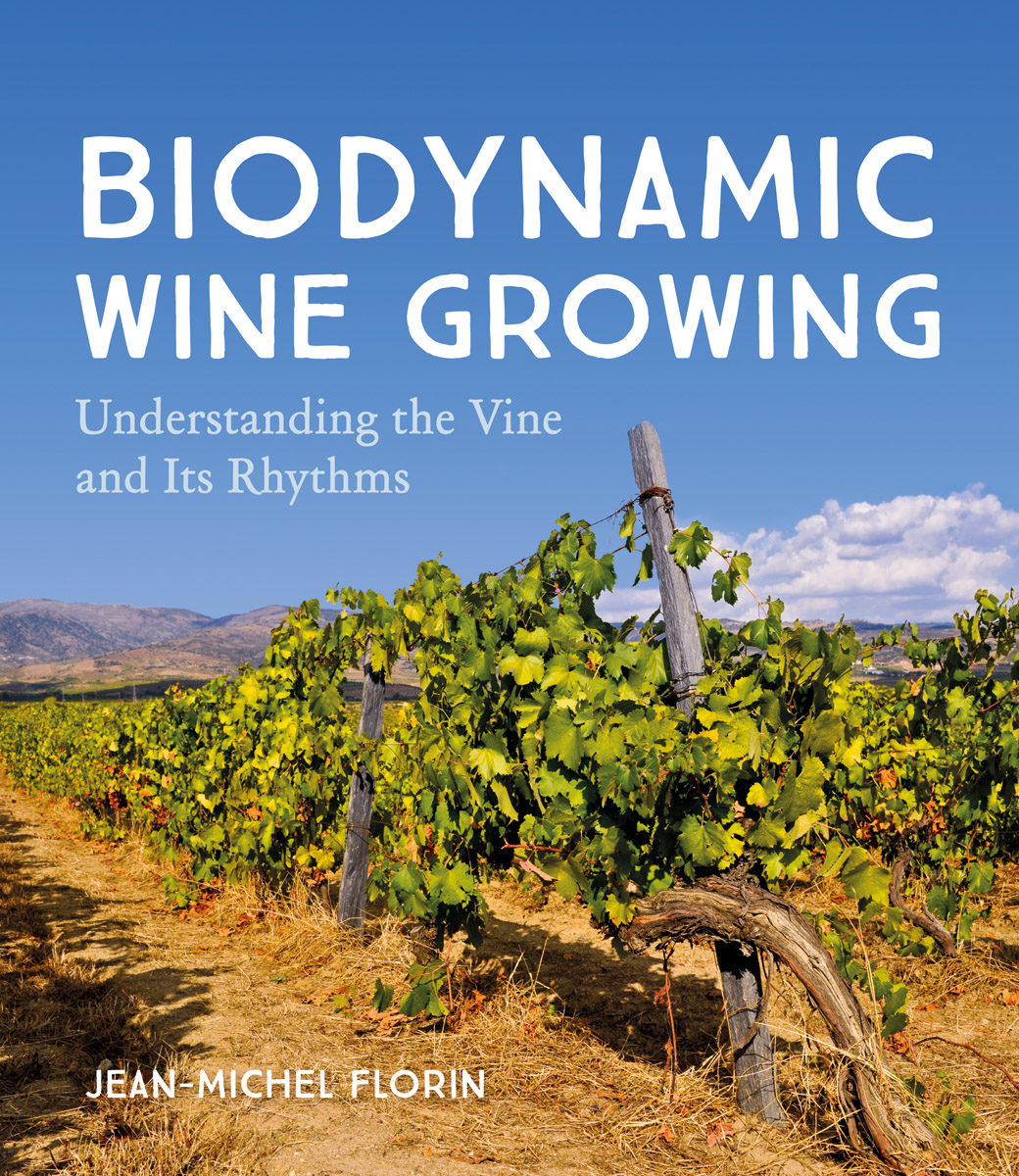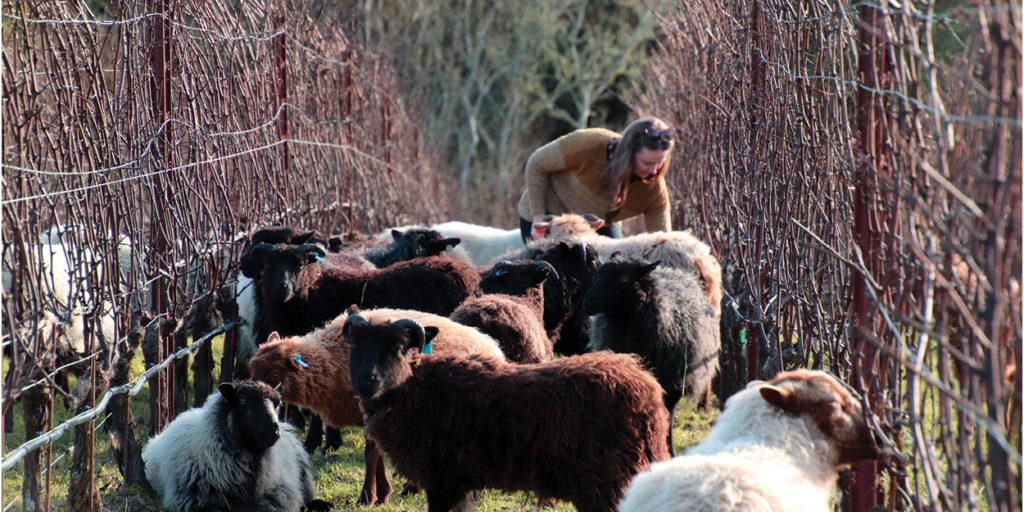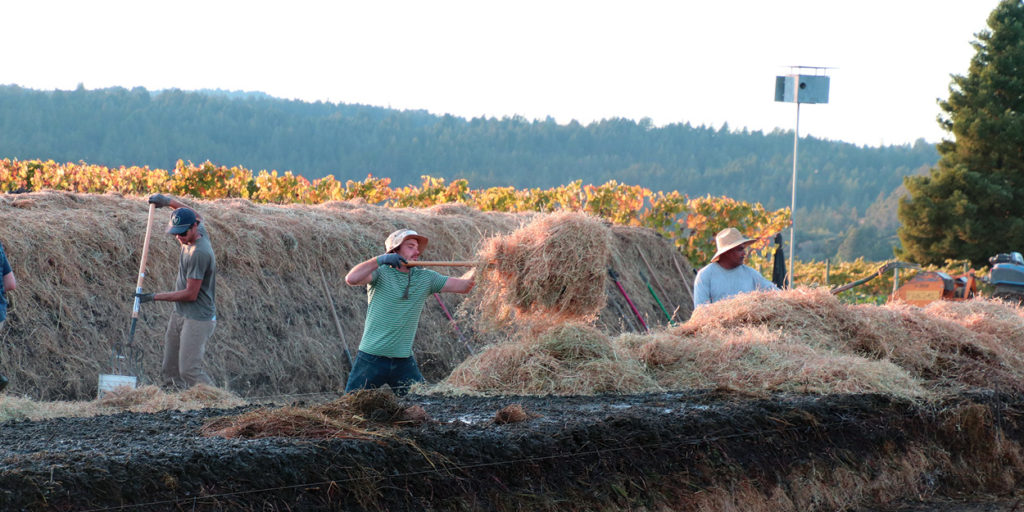Step inside Biodynamic Wine Growing: Understanding the Vine and Its Rhythms
by Floris Books • 14 April 2021 • Biodynamics • 0 Comments

Biodynamic Wine Growing: Understanding the Vine and Its Rhythms edited by Jean-Michel Florin, co-leader of the Biodynamic Section at the Goetheanum in Switzerland, offers both practical advice for wine growers and an intriguing exploration of Goethean theory in relation to vines. This beautifully illustrated and informative book includes practical articles on all aspects of wine growing, including biodiversity, pruning, treating and preventing disease. Perfect for biodynamic growers and those considering converting to biodynamic methods, this book features expert case studies from America, France and New Zealand, each examining a different aspect of biodynamic viniculture.
Below, we share an extract of an article from the book on Littorai Wines, Sonoma County, California, USA by Ted Lemon.

Littorai Wines is a family estate located in western Sonoma County, California, and dedicated to vineyard-designated Pinot Noir and Chardonnay wines. Littorai began its biodynamic journey in 2000. After a twenty-year career of conventional farming in Burgundy, Oregon and California, my wife Heidi and I, as proprietors, had become dissatisfied with this farming paradigm as an explanation for how plants grow and reproduce. Today Littorai itself farms half of its total production, the remainder is from growers. All Littorai’s vineyard sources are farmed using organically certified materials, 85 per cent are farmed biodynamically. There are fourteen vineyard sites spread over 100 km (65 miles) from north to south.
The fertility cycle is focused at two estate properties, one each on the Sonoma Coast and Anderson Valley. We produce our own compost for all the sites that we farm. For the grape growers with whom we work, we provide preparations and compost as requested by the individual growers. Some follow their own biodynamic paths and others follow the Littorai program completely. The compost stream is composed of as varied materials as possible, sourced from our properties: grape pomace, hay balage, tree coppicing, vineyard prunings, cow manure and summer crops of sorghum and sunflowers. Supplemental hay and cow manure are sourced from organic dairies and farms as needed.
The animal world is an important part of Littorai’s practices. Dexter cattle, primitive Shetland sheep, ducks, chickens and a donkey create diverse manures for both open pastures and vineyards blocks. The Dexter and Shetland breeds are small-statured, hardy, thrifty, self-reliant animals that produce healthy offspring without human intervention.

Littorai grows all the plants required for its biodynamic teas and preparations and makes all its preparations in-house. Most of the animal parts required for the preparations now come from the Littorai animals.
For many years we have concentrated on the development of healthy, complex farm organisms for the two primary sites. Part of this development is an extensive tree planting program. In a summer dry climate, trees are a critical, drought resistant, self-regenerating source of food (and shade) for the animals, compost materials, and biodiversity. On the primary sites, vines represent less than 16 per cent of the total property acreage, the balance is forests, fields and hedgerows. Redwoods, native deciduous and live oaks, poplars, native hawthorns, native cedars and a variety of willows are the backbones of this program. Additionally, we have established companion plantings of perennial and annual shrubs and flowers at all of the sites we farm. In the early years, these plantings were primarily composed of European species, well-adapted to our environment (for example, lavender and rosemary). In the mid-2000s Littorai established a trial garden for other species. Since that time, we have shifted largely to plantings of native plants.

Insect diversity and habitat are critical. After many years of managing European honeybee hives, we abandoned the effort. We now rely on wild honeybee colonies, which live in abundance in our area, to handle the ecological niche which the European honeybee has occupied for centuries in North America. The more beautiful question to us was, what native pollinators performed the services of the honeybee before its arrival in the Americas? The answer is, of course, a wide array of species, but important among these are native American bees including Osmia californica, Osmia lignaria and Leaf-cutter bees. We now have many constructed nests for these species, and have installed bat and owl boxes as well as bluebird and swallow nests throughout the properties.
Vineyards pose unique challenges as biodynamic ‘farms’ in that the demands of wine production easily compromise farm diversity. Indeed, most of the traditional winegrowing regions in both the New and Old Worlds are vast monocultures. We find it hard to understand how the biodynamic model can thrive under such conditions over the long term. Our goal is to contribute to a new wine-farm model, where wine production can remain the central focus, but additional farming activities perform the vital role of nurturing the long-term health of the vines, our consumers and the farmers.
We hope you’ve enjoyed this extract from Biodynamic Wine Growing: Understanding the Vine and Its Rhythms edited by Jean-Michel Florin. Find out more about this fascinating and practical guide here.
Keep up-to-date on all our latest biodynamic resources and receive exclusive discounts when you join our mailing list here.